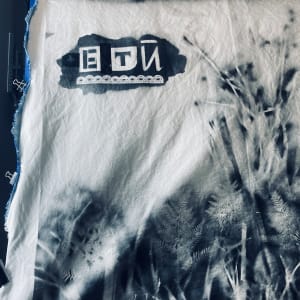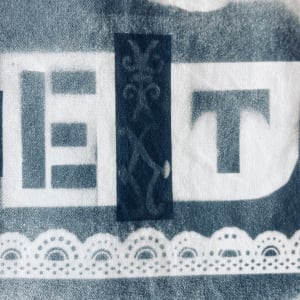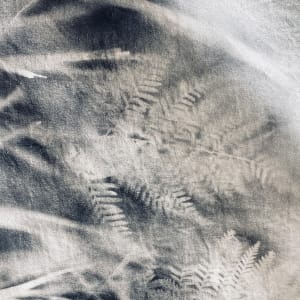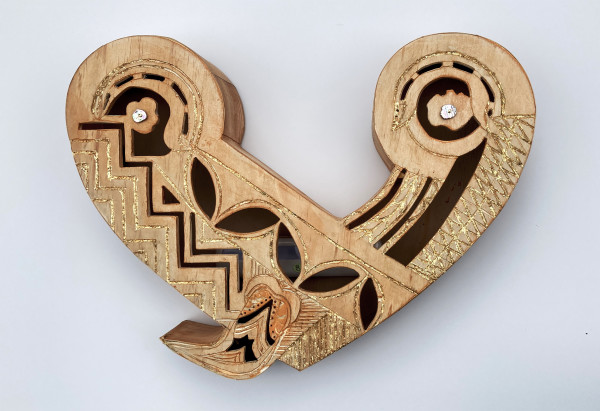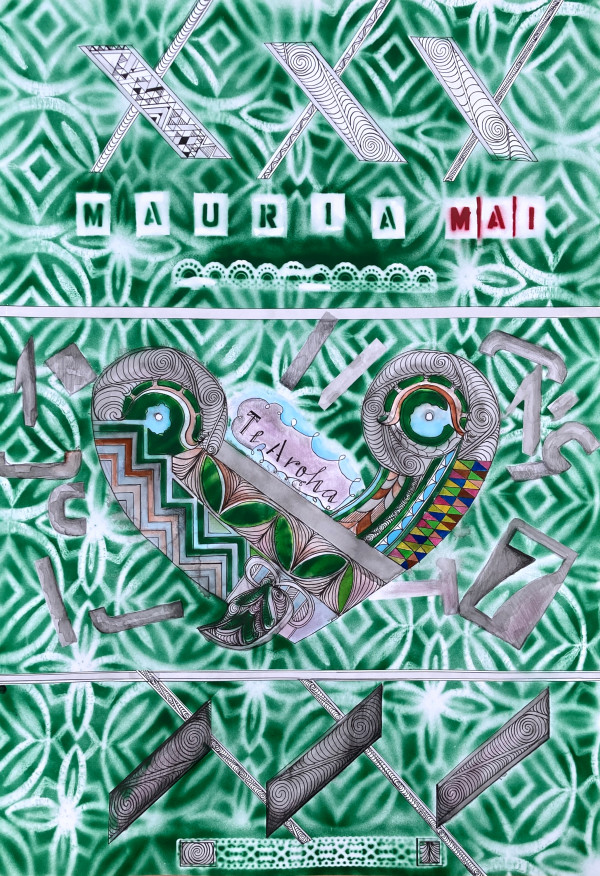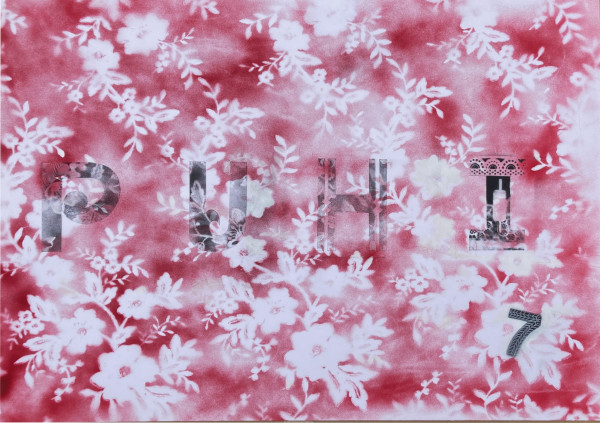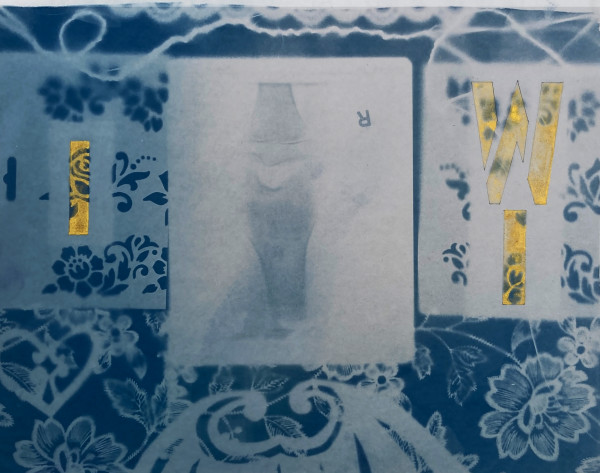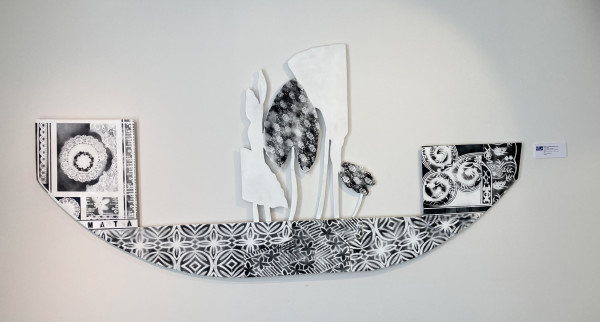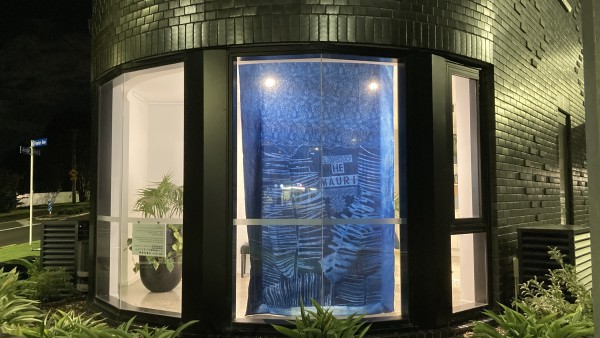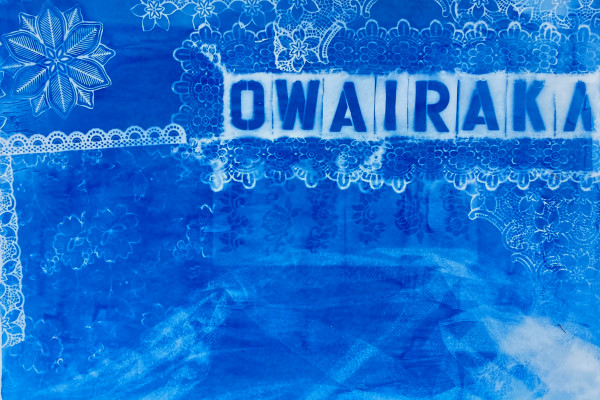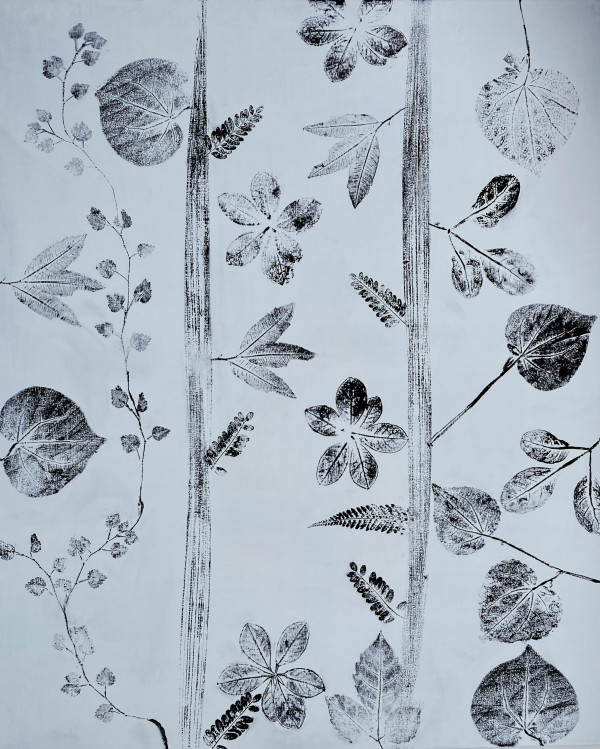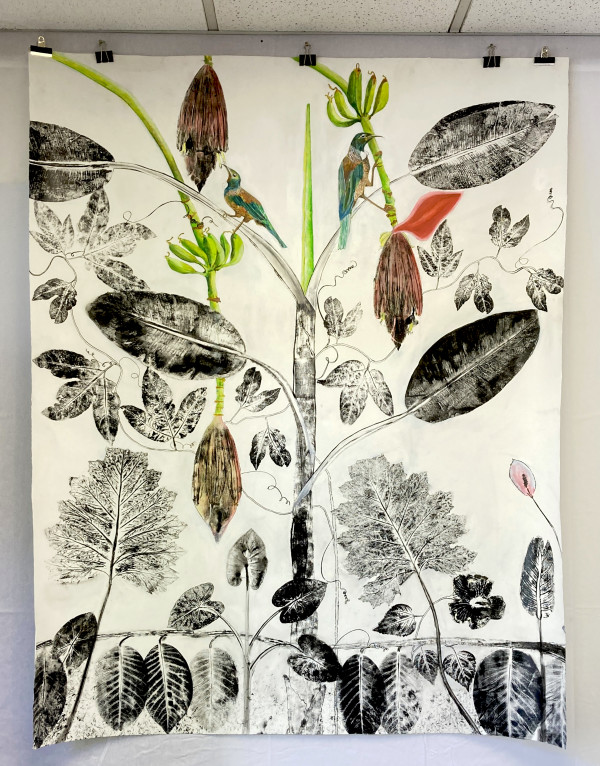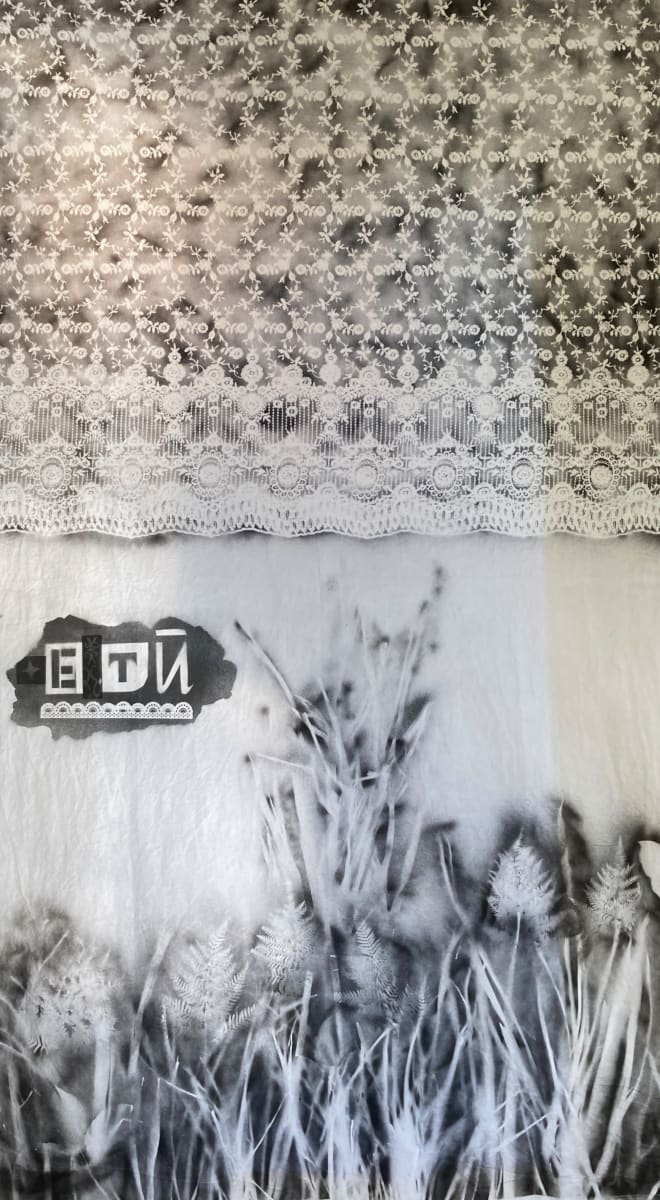
'E Tū' features another part of the story of journeys suggested in 'He Mauri'. It deliberately works with nīkau leaves from Rangitāhua 'Keremedec Islands' as a point of connection with the sojourning Mataatua. Within the show it sits next to the cyanotype 'Owairaka' and offers tautoko to the life and character of Wairaka and her legacy of allowing descendants a place to stand in this area - a tūrangawaewae. E tū 'stand' is a suggestive statement for rangatahi and those who follow on with the legacy Wairaka established. The use of the mouku fern in the lower composition embodies its hardiness and its propensity for he tupuranga 'the ability of the local fern to stand, grow and flourish'. Descended from the original remnant volcanic forest which once covered Tāmaki it grew and still grows prolifically in Mt Albert particularly in soil retained by volcanic rock. It is a living connectin with Wairaka gardening on and around the slopes of the maunga. There is a resilience and an abundance to the proliferation of mouku under the right natural conditions. Ka mate he tete kura ka tupu he tete kura.
- Subject Matter: botanical, Maori Art,

